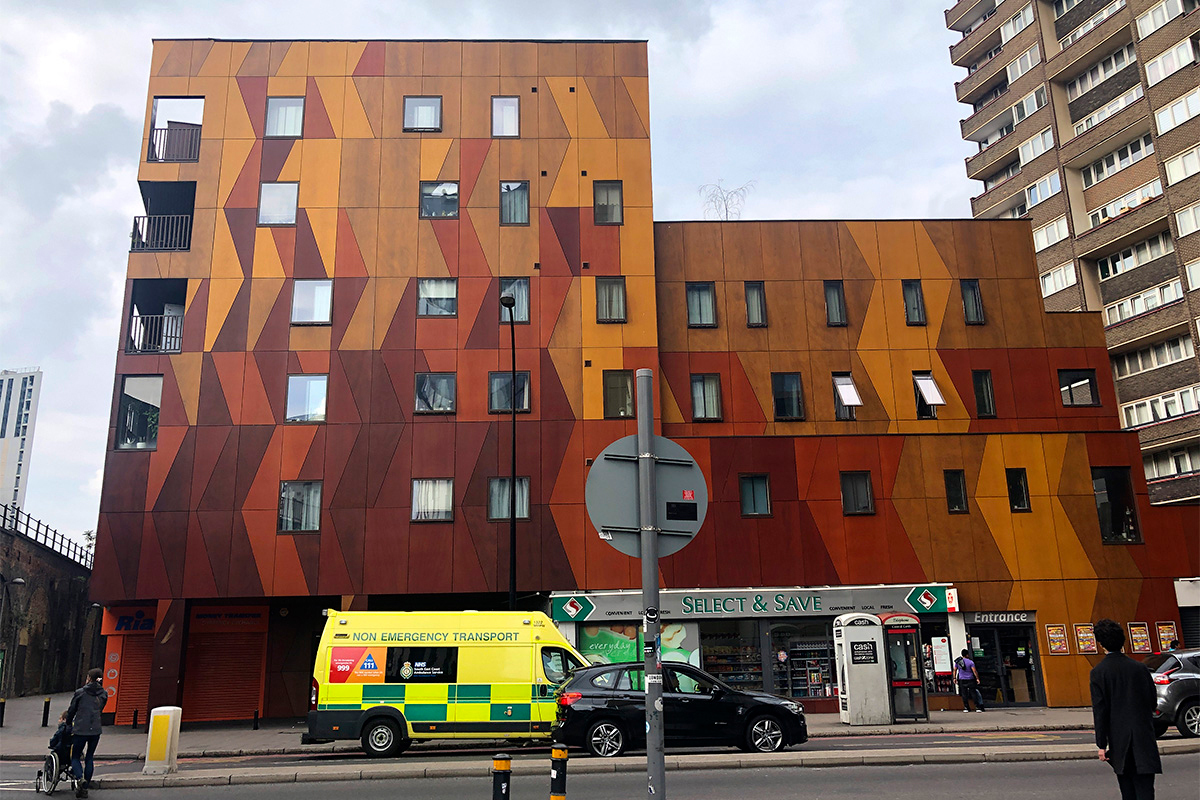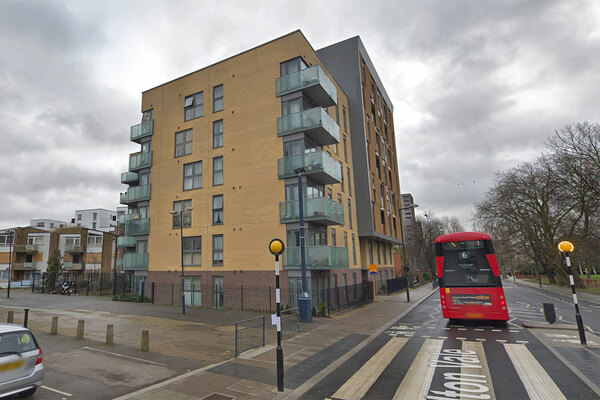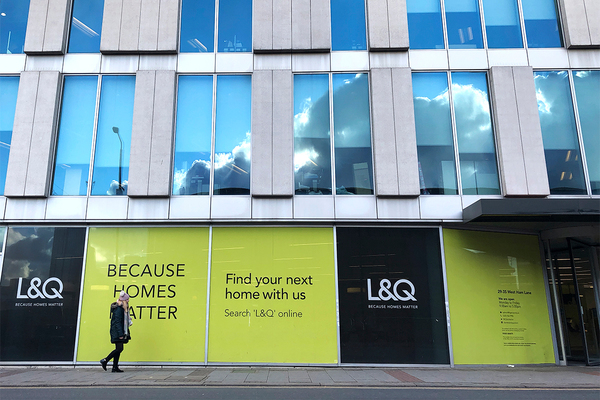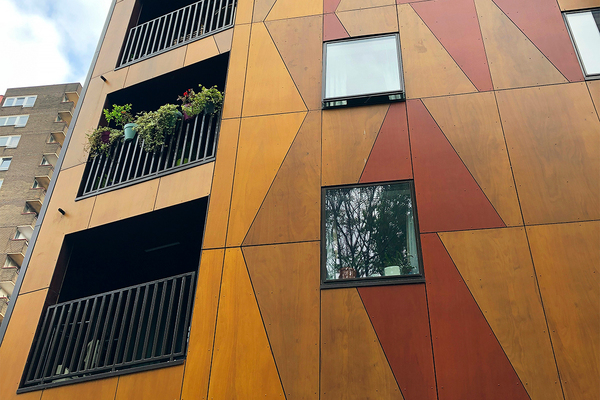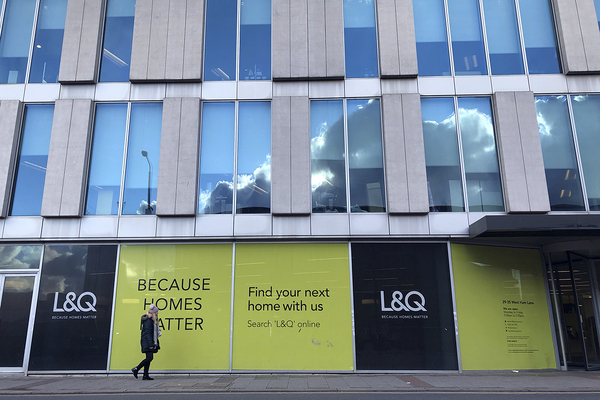You are viewing 1 of your 1 free articles
How fire safety works are hitting HAs and their tenants
As cladding is removed from towers in the aftermath of Grenfell, many tenants are having to leave their homes. Tim Clark finds out more. Photography by Sonny Dhamu and Tim Foster
Saddled with expensive, seemingly endless remedial works, with groups of residents bitter at being removed from their homes and costs eating into their surpluses, the UK’s housing associations are still counting the cost of fixing fire safety issues discovered in the aftermath of the Grenfell fire in 2017.
Investigations continue to unearth new problems despite the two-year anniversary of the fire that killed 72 people looming on the horizon.
This month two housing associations, L&Q and Catalyst, were forced to decant residents from their homes while works are done to remedy fire safety issues with the buildings.
The removal of aluminium composite material (ACM) cladding, non-ACM and insulation systems was deemed too disruptive by both to allow residents to remain.
The issues faced by L&Q and Catalyst follow on from problems that Clarion had back in November at its Oakgrove development in Milton Keynes, which saw tenants evacuated as the housing associations fixed issues with the internal walls at four blocks of flats.
So as the cases like those at L&Q, Catalyst and Clarion begin to surface more frequently, Inside Housing looks at the key issues that providers face when it comes to remedying their fire safety problems.
“The priority is to ensure residents are safe. We think it’s necessary to move residents out as soon as possible,” Andy Brown, chief operations officer, L&Q
A key aspect for many is the focus on keeping their residents safe.
L&Q has taken steps to move residents out of its 54-home Arch Street scheme in Elephant & Castle after fire investigations found issues not only with the cladding, but also the insulation and quality of installation. Remedial work could take two years, and in that time, residents will need to find alternative accommodation. L&Q is providing assistance but has admitted that there is no guarantee moved residents will be able to find accommodation close by.
Speaking to Inside Housing, Andy Brown, chief operations officer at L&Q, emphasised that resident safety was his highest priority.
He said: “Right now the priority is to ensure residents are safe. We think it’s necessary to move residents out as soon as possible. We know how disruptive it is, but we do think it’s the right decision based on their safety. Clearly we are going to give our residents every assistance we can and [ensure] that they have no cost as a result.”
The cost of remedial works at Arch Street for L&Q is not known, however a key issue that many providers face is the scale of the problems which could be unearthed by inspections.
A number of associations have undertaken intrusive investigations, known as Type 4 risk assessments, into their buildings. These inspections look not only at the materials used but the quality of the installation to double-check that fire breaks and other barriers are in place. This has exposed problems which may well have never otherwise been identified.
Hyde Group found fire safety problems with all 86 of its tower blocks when it inspected them. Issues ranged from a lack of a fire exit sign, to remedial or refurbishment work costing up to £8m. Elaine Bailey, its chief executive, said that significant remediation was taking place on 10 of its tall buildings.
Tenants at a Catalyst housing block in north London were told they would have to vacate their homes after serious fire safety issues were found with the building. Residents at the 50-home scheme at Merle Court were informed that the work could take up to two years.
“The problem is not ACM cladding, it is the brick – the external wall is a big sandwich and one of those layers is an insulation material which is combustible,” Ian McDermott, chief executive, Catalyst
Speaking to Inside Housing two weeks ago about cladding problems, Ian McDermott, chief executive at Catalyst, said: “The problem is not ACM cladding, it is the brick – the external wall is a big sandwich and one of those layers is an insulation material which is combustible. It is that which needs to be taken off. The only real way of removing that is to decant the block.”
He added: “The relatively recent change in regulation that effectively outlawed the use of combustible materials in cladding or insulation meant that all of a sudden there was no choice other than to remove it. We’ve done everything that needs to be done to make it safe. Should we have done it quicker? Probably.”
In December, housing secretary James Brokenshire updated building regulations, including an advice note on external wall systems, which forced Catalyst’s hand in terms of remediation.
Victoria Moffett, Grenfell programme lead at the National Housing Federation, says that housing associations need to build on the findings of the Hackitt Review: “Last year the Hackitt Review found that the building regulations system is not fit for purpose. Since then, housing associations have been carrying out rigorous fire safety checks to ensure their residents are safe.
“In some cases cladding or fire doors need to be replaced, or fire stopping measures need to be improved. In a few cases, as we are already seeing, it may be necessary to move residents out of a building while safety works are carried out.”
The government guidance issued by the Ministry of Housing, Communities and Local Government has informed associations on what they should and should not be considering when it comes to remedial work. This has led to initial ACM cladding work being expanded to include other measures. Many associations are also looking to future regulation changes and taking action on their properties in advance.
The government began to move beyond looking purely at ACM cladding late last year and announced in January plans to test a further set of cladding materials.
“Previously we would rely on others to certify buildings, but now we are doing that ourselves. It has changed how we have worked,” Clare Miller, chief executive, Clarion
The new materials being tested by the government include zinc composite material, copper composite material, aluminium honeycomb, high-pressure laminate (HPL), brick slip systems and reconstituted stone. Tests have now started, and results are expected in the summer.
Inside Housing understands that a number of associations, including Notting Hill Genesis, Metropolitan and Hyde, have all taken steps to remove HPL from their blocks.
L&Q’s Arch Street scheme is clad in HPL. The association is checking its other properties to ascertain if it has similar cladding on other blocks. It has more than 200 tower blocks over six storeys tall.
Andy Brown, chief operations officer at L&Q
It confirmed it was carrying out enhanced ‘intrusive’ assessments in many of these buildings, according to the latest government guidance issued in December.
This work has come at a cost. L&Q has announced that it has set aside £50m over three years to cover the costs of any remedial work. However, Mr Brown told Inside Housing that he did expect to need to put more money aside in future as a provision.
Another issue that associations are having to contend with is the costs of buying back properties and recompensing residents that have to move out. Residents are being paid £6,300 as part of the government’s statutory Home Loss Payment at Merle Court, while moving costs will also be covered by Catalyst.
At Arch Street, L&Q will pay the difference in rent on the properties where residents live while the work is being carried out.
Catalyst and L&Q have also offered to buy back the properties from shared owners. Catalyst’s Mr McDermott said the buy-back would cost the organisation a lot of money, a lot of which would be coming out of Catalyst’s budget.
While housing associations continue to deal with legacy issues with fire safety, many are taking steps to ensure these types of problems do not recur in the future. This has included housing associations carrying out closer monitoring of their construction partners delivering their new homes.
Some have begun employing more clerks of works to oversee schemes independently of their contractors.
L&Q’s Arch Street scheme in Elephant & Castle, which is clad in HPL
Clare Miller, chief executive at Clarion, told Inside Housing last year that it was scrutinising its projects more closely than before. She said that it had learned a lot from its situation at Orchard Village in Rainham in 2017, where defects on a number of properties were discovered by residents.
“[It] means we have a much stronger presence on site when buildings go up,” she said.
“Previously we would rely on others to certify buildings, but now we are doing that ourselves. It has changed how we have worked.”
Associations are now carrying out inspection works on their new builds in a way not seen before as part of a programme to futureproof buildings, and ensure that the problems of today do not happen tomorrow.
However, this does not deal with the high number of buildings owned by associations that were built in recent decades with a litany of fire safety issues.
As the guidance from the government on building regulations and materials continues to evolve, this could see more problems arising that need to be rectified by the associations.
And, like in the case of Merle Court and Arch Street, it will be the residents that could feel the impact.
End Our Cladding Scandal: campaign aims
- Government provides a fund to cover the cost of cladding removal and remedial works on private blocks
- A firm timescale is set out of no more than two years for the work to be carried out
- Residents are reimbursed for the interim fire safety costs incurred, and funding is to be provided for necessary internal fire safety measures identified by a competent fire risk assessor
